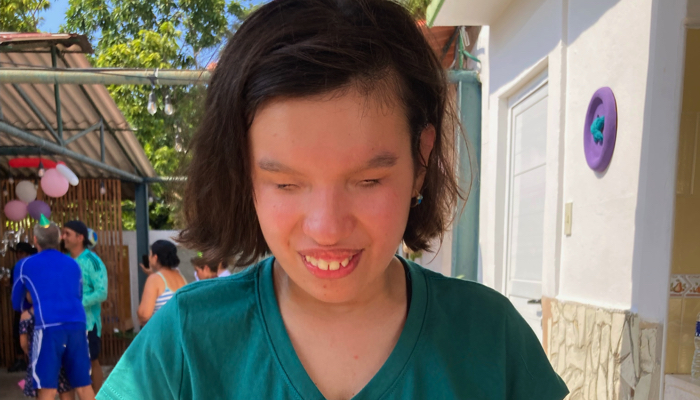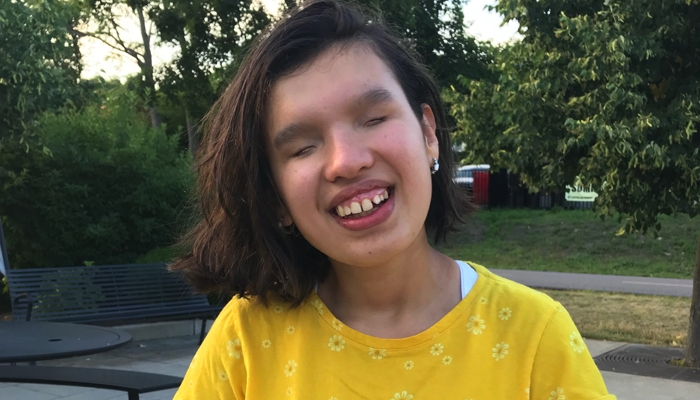Q&A with Ocularist Walter T. Tillman

By Megan E.
 Megan from MAPS talks to Walter Tillman about ocularists and prosthetics. Megan’s daughter, Ava, was born with bilateral anophthalmia and sees Walter Tillman in Pittsburgh.
Megan from MAPS talks to Walter Tillman about ocularists and prosthetics. Megan’s daughter, Ava, was born with bilateral anophthalmia and sees Walter Tillman in Pittsburgh.
What is the difference between an ocularist and an ophthalmologist? Should children with anophthalmia/microphthalmia see both kinds of specialists?
Walter: An ophthalmologist is an M.D. specializing in eye care. An Ocularist is a technician trained in the fitting and fabrication of artificial eyes. At birth, a child, showing symptoms of A/M should be evaluated by a pediatric ophthalmologist who will refer to the appropriate eye specialists.
How early should a child with A/M see an ocularist?
Walter: In cases of true anophthalmos or severe microphthalmos, the child should be seen as soon as possible. Infants grow rapidly and expansion therapy is most effective in these early stages. The need is less urgent when a well developed microphtalmic or cystic eye is present as the globe will provide needed stimulus for orbital growth.
What should parents know about working with an ocularist? How can parents prepare for this process?
Walter: In the more challenging cases, treatment of A/M can be a long and arduous process. One of the responsibilities of the ocularist is to ensure that the parents understand what is involved and have realistic expectations. Communication between parents and ocularist, and other eye specialists, is a key factor in ensuring that the child receives the best care possible. Many parents seek counseling or support groups, to help with what is invariably a difficult and emotional process.
When you first assess a child with bilateral or unilateral A/M, what do you take note of or observe that helps determine your course of action?
Walter: The most important factor in treatment of A/M is the extent of ocular tissue development. A/M presents in a wide range, from extremely rare, true anophthalmia (complete absence of ocular tissue) to near full development microphthalmia (small eye). Generally, the closer to true anophthalmia, the more challenging the treatment may be. In these more severe cases, the entire contents of the orbit are affected, the eye and all surrounding tissue and structure. Treatment should be started soon and followed diligently to ensure the best chance of success.

Are most children with A/M eventually able to wear a prosthetic eye or eyes? What are the determining factors for this?
Walter: Practically all children are eventually able to wear prosthetic eyes following treatment, though some may not have an optimal cosmetic result. The biggest factor, of course is the degree of A/M, but also, when therapy has begun, consistency of follow-up, and course of treatment all play roles. And, as all children are different, there can be differences in how each responds to treatment.
What are some of the latest “treatments” or procedures for A/M, and what are your feelings about them?
Walter: In the past few years new surgical procedures are being tried and show some promise. These involve surgically implanting an orbital implant within the orbit. These implants (usually plastic spheres) are placed in the orbit in the same anatomical position as the undeveloped eye, providing volume and stimulus to help the orbit develop normally. Some recent work has been done, using expandable or self expanding implants in similar fashion. In theory, these implants are positioned deeper than conformers and may help to expand the orbit more effectively.
What are some recommendations that you would make to parents about early surgeries for children with A/M?
Walter: Often, the eyelids and eye opening develop more slowly than the socket. Because of this, some surgeons will attempt surgical expansion or opening of the eyelids. This should be considered only as an absolute last resort. The eyelids are very specialized structures, and once surgically altered, they are never the same.
What are some of the basic differences in “treating” a child with unilateral A/M vs. bilateral A/M?
Walter: In more severe cases, treatment is basically the same. With a child with less severe bilateral A/M, expansion therapy can be less challenging. With symmetry between both eyes as one of the goals, this is more likely when treating two eyes that start out the same. Conversely, when expanding one eye to keep up with the growth of a normal eye, though results can be excellent, absolute symmetry is rarely attained.
Related Posts

Eye Conditions and Syndromes, Support, Visual Impairment
Coping with a Diagnosis: Emotional Support for Families with Visually Impaired Children
Families with emotional support are more resilient. Learn how to establish emotional support with peers, professionals, and the community to help your family thrive.

Eye Conditions and Syndromes
Finding Joy and Strength in Raising a Child with Anophthalmia
When raising a child with anophthalmia, be patient, be kind to yourself, and take it one day at a time. Your child will fill your life with love!

Eye Conditions and Syndromes, Visual Impairment
Anophthalmia: Navigating the Path from Diagnosis to Adaptation for Parents and Their Children
Anophthalmia is a rare disorder that results in childhood blindness. Early intervention services are important to help your baby maximize their potential.